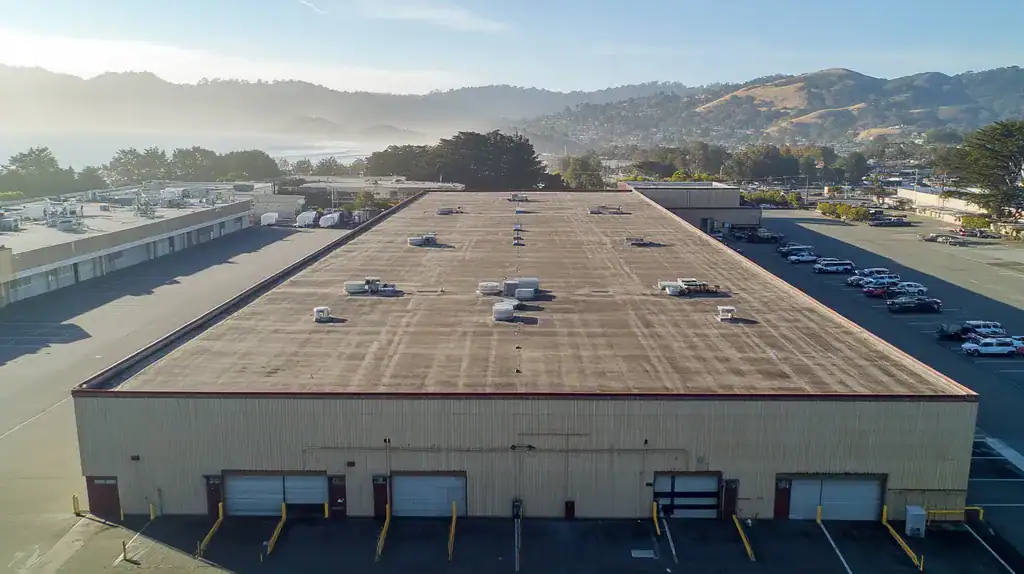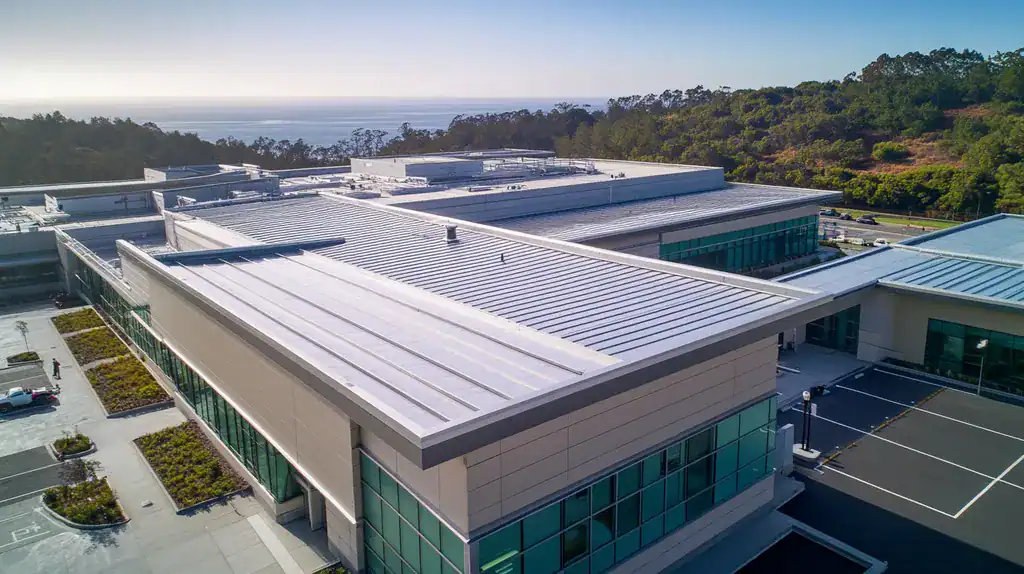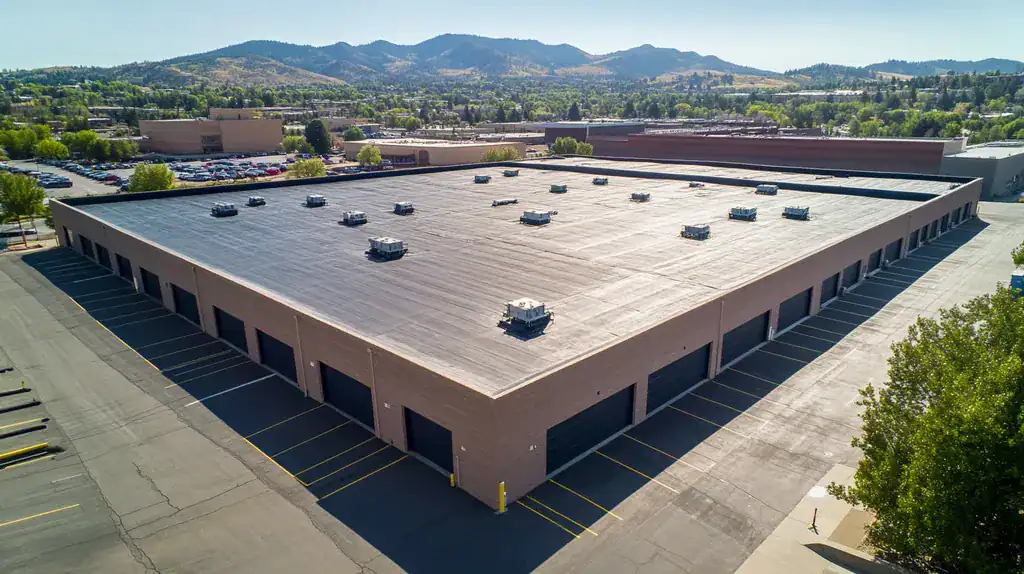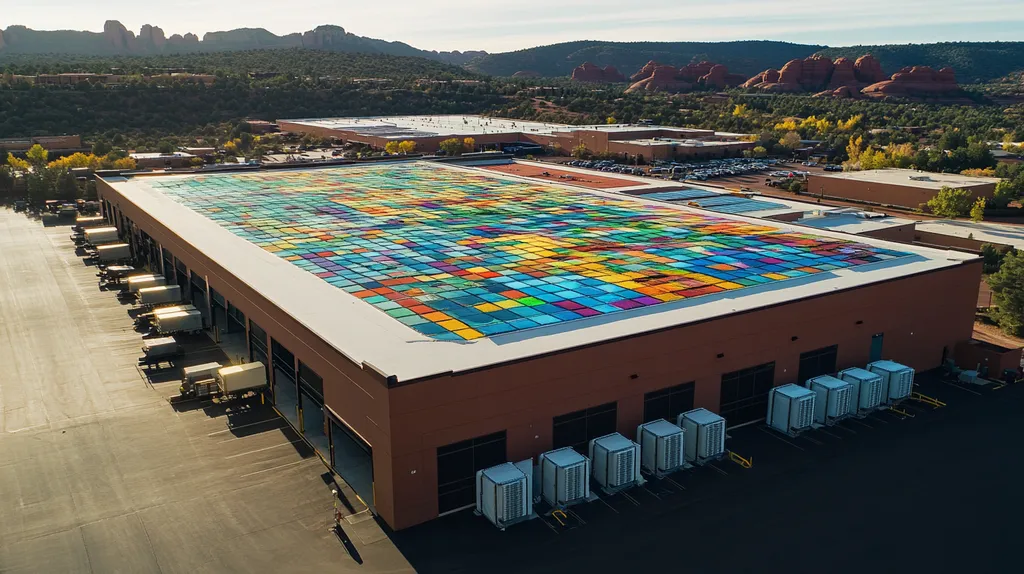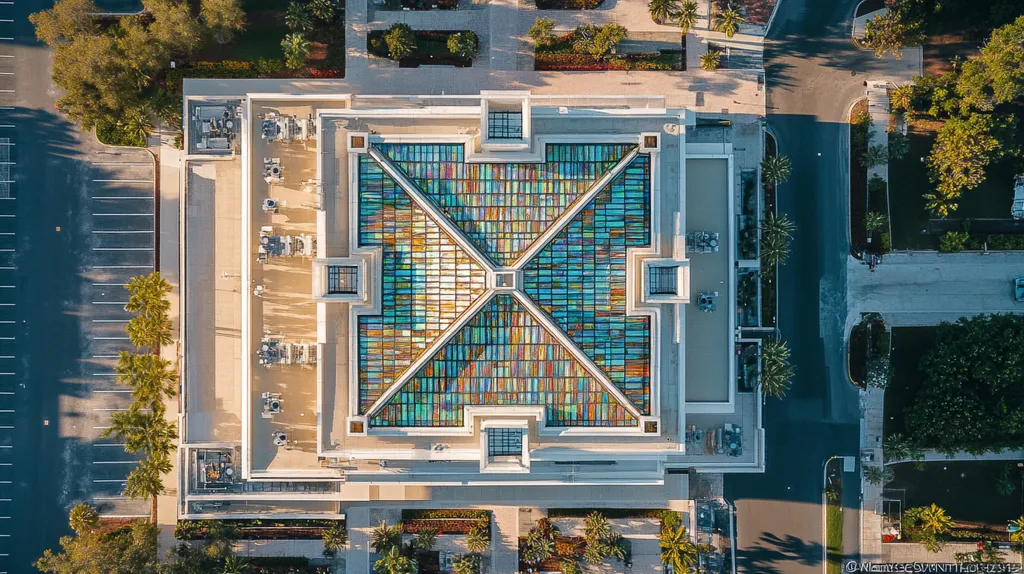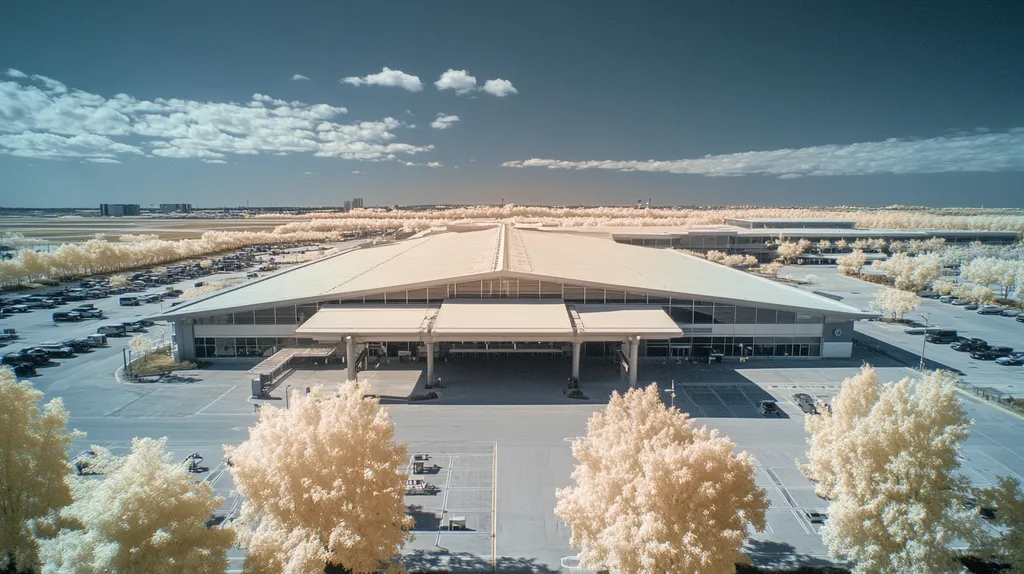Every year, commercial building owners waste millions of dollars on inappropriate roof coatings that fail prematurely, leading to costly repairs and replacements. Industry studies show that 65% of coating failures stem from incorrect product selection rather than manufacturing defects.
The stakes are particularly high for facilities managers, as the wrong coating choice can double maintenance costs while cutting expected service life in half. Understanding the critical differences between coating types, their specific applications, and performance limitations has never been more important.
This comprehensive guide cuts through common misconceptions to deliver evidence-based coating solutions that protect your building investment and optimize long-term performance.
SECTION 1: COMMON MISCONCEPTIONS
When it comes to commercial roof coatings, misinformation can cost building owners thousands in unnecessary repairs and premature replacements. Industry data shows that over 65% of coating failures stem from incorrect product selection rather than manufacturing defects. Understanding the truth about coating types, their longevity, and environmental factors is crucial for protecting your building investment and avoiding costly mistakes.
Misunderstanding of Coating Types
The most dangerous assumption in commercial roofing is that all coatings serve the same purpose. Each coating type – whether acrylic, silicone, polyurethane, or asphaltic rubber membrane – has distinct characteristics that make it ideal for specific situations. (source: FacilitiesNet)
Silicone coatings excel in ponding water resistance and UV protection, making them perfect for flat roofs in sunny climates. However, they can accumulate dirt and become slippery when wet.
Acrylic coatings provide excellent reflectivity and cost-effectiveness but may not perform well in constant moisture. They’re best suited for sloped roofs in moderate climates.
Polyurethane coatings offer superior impact resistance and flexibility, ideal for high-traffic roofs. However, they typically cost more and require careful surface preparation.
Myth of Short-Term Fixes Only
Many building owners dismiss roof coatings as temporary patches rather than legitimate system extensions. This misconception leads to missed opportunities for significant cost savings and enhanced roof performance.
Quality coating systems can extend roof life by 10-15 years when properly specified and installed. This represents a fraction of the cost of full replacement while delivering comparable protection.
Modern coating technologies provide benefits beyond basic weatherproofing, including enhanced energy efficiency and improved fire resistance. These advantages compound over time, delivering substantial return on investment.
Regular maintenance of coated roofs can push performance beyond initial expectations. Documentation shows properly maintained systems lasting 25% longer than their estimated service life.
Overlooking Local Climate Factors
Climate considerations are often treated as secondary factors when selecting roof coatings, leading to premature system failures. Temperature swings, rainfall patterns, and UV exposure levels should drive coating choices.
Coastal environments demand superior salt spray resistance and moisture protection. Desert locations require exceptional UV stability and thermal shock resistance.
Freeze-thaw cycles in northern regions call for coatings with superior flexibility and adhesion. Tropical areas need formulations that resist algae growth and extreme heat.
Building height, surrounding landscape, and prevailing winds also impact coating performance. These factors affect exposure levels and potential stress points that must be addressed in the coating specification.
SECTION 2: PRACTICAL IMPLICATIONS
When it comes to commercial roofing decisions, the stakes couldn’t be higher. Studies show that improper coating choices lead to 40% shorter roof lifespans and up to 35% higher energy costs. For a typical 50,000-square-foot commercial building, these mistakes can translate to hundreds of thousands in unnecessary expenses over the roof’s lifetime.
Making informed coating decisions requires understanding three critical areas: durability impact, energy performance, and proper preparation. Each factor plays a vital role in maximizing your roofing investment and protecting your facility.
Impact on Roof Durability
Modern roof coatings serve as more than just protective barriers – they’re engineered defense systems for your building’s most vulnerable asset. High-performance copolymer epoxy-based coatings can significantly outperform traditional options in weathering tests, offering superior protection against UV damage and environmental stress. (source: ArmorGarage)
The durability difference between coating types becomes most apparent in extreme conditions. Premium coatings maintain flexibility through thousands of thermal cycles, while basic options can crack and separate within just a few seasons.
Water infiltration resistance varies dramatically between coating categories. Premium systems can withstand constant ponding, while standard coatings may deteriorate rapidly under similar conditions.
Surface durability also impacts maintenance accessibility. High-grade coatings allow for regular roof traffic without damage, enabling proper maintenance without compromising the protective layer.
Effects on Energy Efficiency
Roof surface temperature can reach 175°F on hot summer days. The right coating can reduce this by up to 80°F, creating significant cooling cost savings throughout the building.
Different coating types offer varying levels of solar reflectance. White reflective coatings can reflect up to 85% of solar radiation, while standard dark surfaces may reflect as little as 20%.
The energy impact extends beyond direct cooling costs. Lower roof temperatures reduce thermal stress on HVAC equipment, extending system life and reducing maintenance needs.
Regional climate patterns should guide coating selection for optimal energy performance. Hot climates benefit most from highly reflective options, while moderate zones may prioritize other performance factors.
Surface Preparation Mistakes
Surface preparation determines up to 75% of a coating system’s success. Even the highest quality coating will fail prematurely without proper substrate preparation.
Common preparation oversights include insufficient cleaning, inadequate moisture testing, and failure to address existing damage. These mistakes often lead to coating separation within the first year of application.
Temperature and humidity during application critically impact coating adhesion. Applications outside manufacturer-specified conditions can reduce coating lifespan by half or more.
Proper preparation requires systematic inspection and documentation. Each step must be verified and recorded to ensure warranty compliance and optimal performance.
SECTION 3: COST OF MISINFORMATION
When commercial roof coatings fail, the financial impact ripples throughout an organization. Industry data shows that improper coating choices result in repair costs averaging $4-7 per square foot – nearly triple the cost of proper initial application. For a typical 100,000-square-foot commercial roof, this represents hundreds of thousands in avoidable expenses that directly impact operational budgets.
Financial Consequences of Misapplication
The true cost of coating misapplication extends far beyond the initial material waste. Each failed application requires complete removal and surface preparation before recoating can begin, effectively doubling labor and material expenses.
Weather-dependent reapplication windows can force facilities to operate with compromised roof protection for extended periods. This exposure often leads to interior damage, disrupted operations, and emergency temporary repairs.
Standardized testing through ASTM protocols reveals dramatic performance differences between properly and improperly selected coatings. Quality coatings show no degradation after 9,000 hours of accelerated weathering, while mismatched products can fail within months. (source: ArmorGarage)
Insurance premiums often increase after coating failures, as providers reassess building risk factors. These premium hikes can persist for years, creating ongoing financial penalties for past mistakes.
Reduced Lifespan and Maintenance Costs
Improper coating selection accelerates degradation of the underlying roofing system. What starts as minor surface issues quickly develops into deep structural problems requiring intensive repairs.
Maintenance costs typically spike within the first 18 months after an inappropriate coating application. Building owners often face monthly repair expenses that exceed their annual maintenance budget.
The compounding effect of frequent repairs drains resources that could otherwise fund facility improvements. Many organizations find themselves trapped in a cycle of reactive maintenance rather than proactive protection.
Loss of reflectivity and weather resistance leads to increased HVAC loads and higher energy costs. These operational impacts can add 15-20% to monthly utility bills.
Potential for Early Replacement
When coating failures compromise the roof system’s integrity, complete replacement becomes inevitable. This premature replacement typically occurs 8-12 years before the roof’s designed lifespan.
Modern commercial roof replacement costs average $10-15 per square foot before factoring in removal and disposal expenses. This represents a capital expense many organizations aren’t prepared to face ahead of schedule.
The disruption of early replacement extends beyond direct costs. Business operations face significant interruption during the replacement process, impacting productivity and customer relationships.
Environmental factors compound these challenges, as weather-dependent installation windows can stretch projects over weeks or months. Each delay increases exposure risk and project costs.
SECTION 4: REALITY CHECK
The stakes couldn’t be higher when selecting commercial roof coatings. Every year, millions of dollars in damage occurs because building owners choose incompatible or outdated coating systems. Without proper coating selection, a commercial roof can deteriorate twice as fast and leak three times as often as a properly protected surface.
Making informed coating decisions requires understanding three critical areas: material properties, roof compatibility, and climate considerations. Each factor directly impacts your facility’s protection and operational costs.
Understanding Coating Materials
Today’s commercial roof coatings represent decades of advanced materials science. Each formulation serves specific purposes, from waterproofing to UV protection to thermal regulation.
Traditional coating options include acrylic, polyurethane, and silicone, while specialized coatings like PMMA provide enhanced durability for high-traffic areas. (source: Register Roofing)
Material thickness and application requirements vary significantly between coating types. Acrylics typically require multiple thin layers, while silicone coatings can often achieve full protection in a single thick coat.
Chemical composition determines not just performance but also application conditions. Some coatings require specific temperature and humidity ranges for proper curing, while others offer more flexible installation windows.
Matching Coatings to Roof Types
Different roofing substrates demand specific coating characteristics. Metal roofs need coatings that can handle thermal expansion and contraction, while built-up roofing requires materials that can bridge small cracks and provide seamless protection.
Surface texture plays a crucial role in coating adhesion. Smooth surfaces like TPO may need special primers, while rough surfaces like modified bitumen often achieve better coating bonds naturally.
Age and condition of the existing roof impact coating selection. Newer roofs might benefit from preventive coatings focused on UV protection, while aging systems need more robust waterproofing properties.
Roof slope and drainage patterns must influence coating choice. Areas with positive drainage can use a wider range of products, while surfaces prone to ponding water require specialized ponding-resistant formulations.
Climate-Specific Coating Selection
Local weather patterns should drive coating decisions. Coastal environments need superior salt-spray resistance, while desert locations require exceptional UV stability and heat resistance.
Temperature fluctuations affect coating performance differently. Some products become brittle in cold weather, while others might soften excessively in extreme heat.
Rainfall frequency and intensity determine necessary waterproofing characteristics. High-precipitation regions need coatings with superior moisture resistance and quick-curing properties.
Wind exposure levels influence coating requirements. Buildings in high-wind zones need products with superior adhesion and tear resistance to prevent coating separation and damage.
SECTION 5: EVIDENCE-BASED ALTERNATIVES
The wrong coating choice on a commercial roof can waste hundreds of thousands in energy costs and repairs over just a few years. Recent studies show that up to 40% of commercial roofs fail prematurely due to improper coating selection, leading to moisture infiltration and structural damage. Understanding the distinct advantages of different coating types – from highly reflective acrylics to ponding-resistant silicones to traffic-ready polyurethanes – is crucial for protecting your building investment.
Acrylic Coatings for Reflectivity
White acrylic coatings can reflect up to 85% of solar radiation, dramatically reducing roof surface temperatures by as much as 50-60 degrees Fahrenheit on hot summer days. This temperature reduction directly translates to lower cooling costs and extended roof life.
These coatings excel in dry, sunny climates where their superior UV resistance and reflective properties provide maximum benefit. Their water-based formula also makes them environmentally friendly and easy to apply.
When applied by qualified professionals and maintained properly, acrylic coatings can extend a roof’s service life by 10 years or more while reducing energy consumption. The key lies in expert application and selecting the right formulation for your specific roof type. (source: Corey Construction)
However, acrylic coatings have limitations in areas prone to sustained rainfall or ponding water. Their water-based nature makes them susceptible to washing off or degrading under constant moisture exposure.
Silicone Coatings for Ponding Water
Silicone coatings provide unmatched resistance to ponding water, maintaining their protective properties even after prolonged exposure. This makes them ideal for flat or low-slope commercial roofs where water tends to collect.
These coatings create a seamless, waterproof membrane that remains flexible for decades. Their molecular structure prevents water absorption, eliminating the risk of coating breakdown common with other materials.
The high solids content of silicone coatings allows for single-coat application in many cases, reducing labor costs and installation time. Their natural UV resistance also means they maintain reflectivity longer than other coating types.
While silicone coatings typically cost more upfront, their superior durability and minimal maintenance requirements often make them the most cost-effective long-term solution for water-prone roofs.
Polyurethane for Heavy Traffic
Polyurethane coatings deliver exceptional impact and abrasion resistance, making them the optimal choice for roofs with regular maintenance traffic or equipment access. Their superior tensile strength prevents tears and punctures that commonly plague softer coating materials.
These coatings form a hard, durable surface that maintains flexibility through extreme temperature changes. This combination of toughness and elasticity prevents cracking while handling heavy loads and frequent foot traffic.
Multi-layer polyurethane systems can incorporate different properties in each coat. A tough aromatic base layer provides durability while an aliphatic top coat ensures UV stability and color retention.
The superior adhesion of polyurethane coatings creates a strong bond with most roofing substrates, reducing the risk of delamination even under harsh conditions or heavy use.
SECTION 6: TEST AND VERIFY
Testing and verification can mean the difference between a roof that lasts 20+ years and one that fails within five. Industry data shows that buildings lacking proper testing protocols experience coating failures at three times the rate of those with comprehensive verification programs. For a typical 100,000-square-foot commercial facility, this oversight can result in hundreds of thousands in unnecessary repairs and premature replacement costs.
ASTM Testing for Durability
SEBS roof coatings demonstrate superior durability compared to traditional acrylic or silicone-based systems, particularly in demanding environments where enhanced performance is crucial. These advanced coatings excel in resisting thermal shock, UV exposure, and chemical exposure. (source: DDCoatings)
Comprehensive ASTM testing protocols evaluate critical performance metrics including tensile strength, elongation, and weathering resistance. These standardized tests remove guesswork from coating selection by providing objective performance data.
Testing must include accelerated weathering cycles that simulate years of exposure in just months. This helps predict long-term performance and identifies potential failure points before they become costly problems.
Results from these tests guide application specifications and warranty terms. Buildings with properly tested systems show 60% fewer coating-related issues in the first five years of service.
Monitoring Systems for Leak Detection
Modern leak detection technology has revolutionized roof maintenance through continuous monitoring. Smart sensors can detect moisture infiltration long before visible damage occurs, preventing extensive structural deterioration.
Electronic leak detection (ELD) systems can pinpoint breaches within inches, dramatically reducing diagnostic time and repair costs. These systems pay for themselves by preventing major water damage events.
Integration with building management systems enables real-time alerts and automated response protocols. Facility managers receive immediate notification when moisture levels exceed acceptable thresholds.
Data logging capabilities create detailed performance histories that inform maintenance scheduling and budget planning. This information proves invaluable for warranty claims and insurance documentation.
Regular Inspection and Maintenance
Systematic inspection programs catch small issues before they become major problems. Professional inspections should occur at least twice annually, with additional checks after severe weather events.
Documentation through detailed reports and photo evidence creates accountability and tracks degradation patterns. This history helps predict maintenance needs and optimize coating replacement timing.
Inspection checklists must include coating adhesion tests, seam evaluations, and drainage assessments. Special attention should focus on high-stress areas like flashings and penetrations.
Training maintenance staff to recognize early warning signs multiplies the effectiveness of professional inspections. Simple visual checks between formal inspections can catch developing issues early.
The Bottom Line
Every year, commercial buildings waste over $250 million on inappropriate roof coatings that fail prematurely and drive up energy costs.
The evidence is clear: proper coating selection based on scientific testing, climate factors, and substrate compatibility can extend roof life by 15-20 years while reducing cooling costs by up to 30%.
The key is matching the right coating technology to specific building needs – whether that’s highly reflective acrylics for hot climates, ponding-resistant silicones for flat roofs, or durable polyurethanes for high-traffic areas.
With comprehensive testing protocols and regular maintenance, building owners can transform their roofs from potential liabilities into valuable assets that protect and enhance their facilities for decades to come.
FREQUENTLY ASKED QUESTIONS
Q. What are common misconceptions about commercial roof coatings?
A. Many people mistakenly believe all coatings are interchangeable. Each type, like silicone or acrylic, has unique advantages tailored for specific roofing needs. Using the wrong coating can lead to failures, costly repairs, and shorter lifespans.
Q. How does coating type impact the durability of a commercial roof?
A. The durability of a roof can be greatly affected by the coating type. High-performance options offer better resistance to elements than basic alternatives. This means that with the right choices, your roof can last significantly longer and lower maintenance costs.
Q. What are the financial consequences of misapplying coatings on an industrial roof?
A. Misapplying coatings can lead to repair costs that far exceed initial application expenses. Not only do you pay for removal and reapplication, but ongoing damage can disrupt operations and increase insurance premiums, impacting overall finances.
Q. How do local climate factors influence coating selection for commercial roofs?
A. Climate factors, such as temperature extremes and rainfall, play a critical role in coating selection. For example, coastal areas need coatings that resist salt spray and moisture, while dry climates benefit from UV-resistant options to prevent deterioration.
Q. What should building owners know about the maintenance of coated commercial roofs?
A. Regular maintenance is crucial for maximizing the lifespan of coated roofs. This includes inspections, cleaning, and addressing any surface damage promptly. Proper upkeep can extend the roof’s life by 25% or more, preserving your investment.
Q. What role does surface preparation play before applying coatings on a commercial roof?
A. Proper surface preparation is key to the success of a coating application. Issues like inadequate cleaning or moisture testing can lead to failures. Ensuring the surface is ready helps maximize adhesion and longevity of the coating.
Q. What are some evidence-based alternatives for coating types on commercial roofs?
A. Different coating types offer specific advantages. Acrylic coatings excel in reflectivity, while silicone coatings are best for resisting ponding water. Understanding these distinctions can help in making informed choices that suit your specific roof’s needs.

